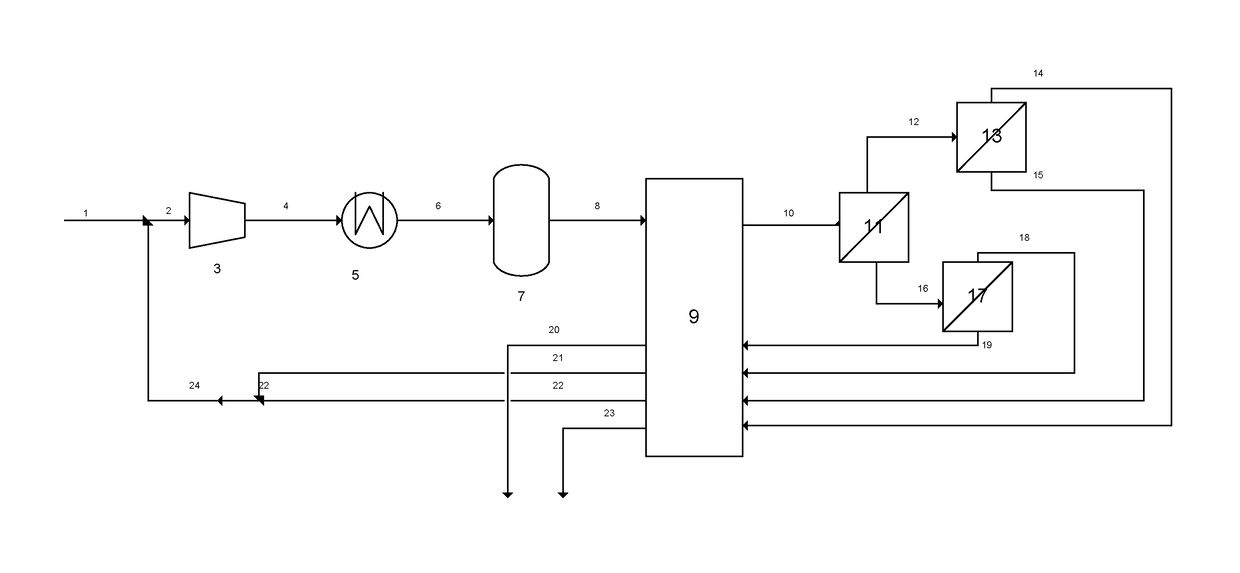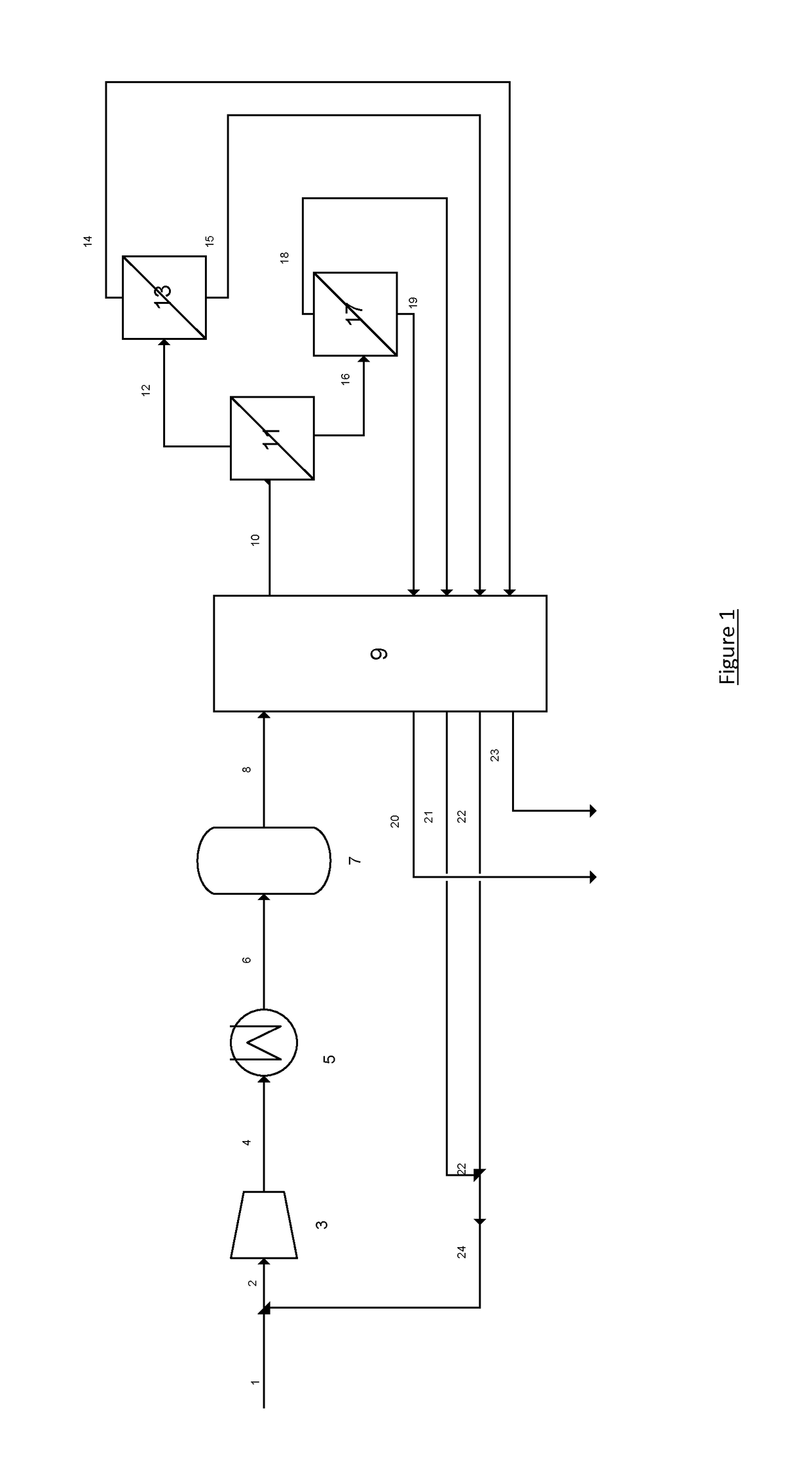Method for purifying biogas through membranes at negative temperatures
a technology of biogas and membranes, applied in biochemistry apparatus, gaseous fuels, biochemistry apparatus and processes, etc., can solve the problems of reducing the heating value, increasing the compression and transport cost, and limiting the economic advantages of upgrading
- Summary
- Abstract
- Description
- Claims
- Application Information
AI Technical Summary
Benefits of technology
Problems solved by technology
Method used
Image
Examples
Embodiment Construction
[0041]The invention will now be described in greater detail with the aid of the FIGURE which is a diagram of the plant according to invention.
[0042]The crude biogas 1, containing 43.6% CO2, 54.6% CH4, 0.8% N2 and 0.2% O2, saturated with water, at 5° C. and at a pressure of 0.1 barg, is mixed with the recycled stream 24, containing 66.6% CO2. The stream 2 is then sent to the compressor 3, where it is compressed to 9.6 barg, before being cooled to 5° C. After cooling, the water is removed in a separator, then the gas is reheated up to 15° C. The stream of gas 6 is then sent to the dryer 7. The stream 8 of dry gas, containing 51.2% CO2, then passes through the exchanger, in which it is cooled to −30° C. The stream of cooled gas enters into a first membrane state, where it is separated into two fractions. The retentate 12 is depleted in CO2 and contains no more than 30% CO2, it is sent to a second membrane stage. The permeate 16 is enriched in CO2 and contains 90% CO2, it is sent to a t...
PUM
 Login to View More
Login to View More Abstract
Description
Claims
Application Information
 Login to View More
Login to View More - R&D
- Intellectual Property
- Life Sciences
- Materials
- Tech Scout
- Unparalleled Data Quality
- Higher Quality Content
- 60% Fewer Hallucinations
Browse by: Latest US Patents, China's latest patents, Technical Efficacy Thesaurus, Application Domain, Technology Topic, Popular Technical Reports.
© 2025 PatSnap. All rights reserved.Legal|Privacy policy|Modern Slavery Act Transparency Statement|Sitemap|About US| Contact US: help@patsnap.com


